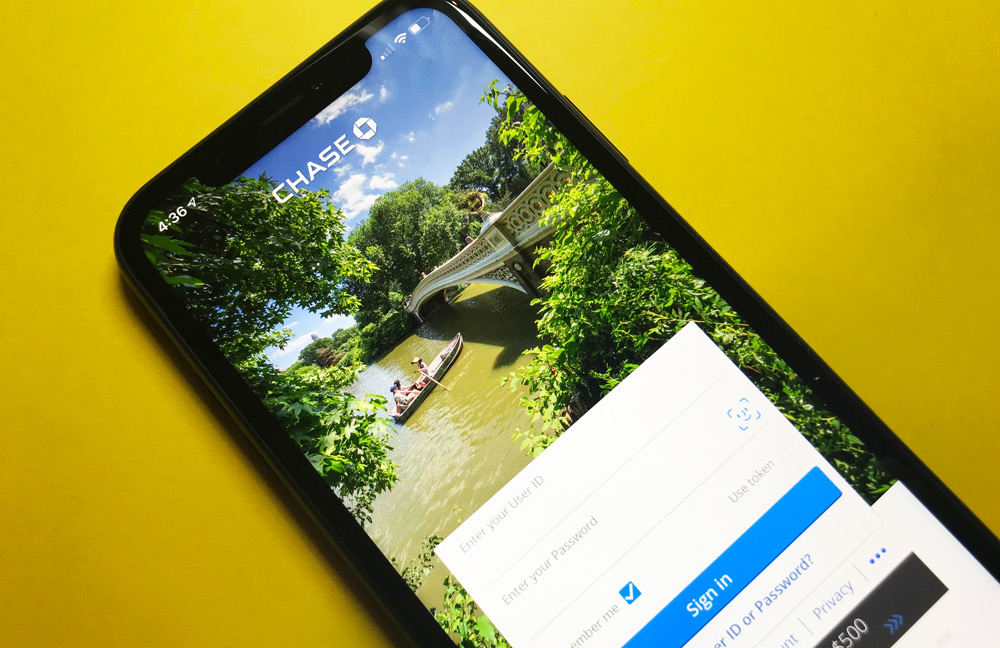
Learn how to avoid the monthly fee on Chase checking accounts through direct deposits, minimum balance requirements, and other possible fee waivers.


Chase Bank iPhone App Chase Bank is the largest U.S. bank based on assets, but you may have also noticed that the bank also seems ubiquitous due to the sheer number of branches, ATMs and even advertising presence. Chase offers various checking accounts and many consumers would want to know how to avoid these monthly fees before they become customers. Some of Chase's checking accounts have hefty monthly maintenance fees that can take a sizeable chunk of money from you each year. If you can waive these fees, you'll be able to Here’s a quick guide that can help:
For the Chase Premier Plus Checking account, you can avoid the $25 monthly fee by meeting one or more of the following criteria for each monthly statement period:
At this time, there is no way to waive the fees for this account.
However, it is worth noting that this account has the lowest fees of the three accounts mentioned and doesn’t charge any overdraft fees.
If you cannot consistently meet the criteria for the abovementioned accounts, this account would be ideal because of the lower monthly maintenance fee.
If you want to meet the fee-waiver requirements for your Chase account, you should understand the meaning of key terms that determine your fee-waiver eligibility.
Not every deposit into your account will be considered towards your electronic deposit requirement.
According to Chase, the following activities meet the bank’s electronic deposit criteria:
Surprisingly, many Chase Total Checking customers reported that other types of incoming transfers were recognized as direct deposits.
You may be able to have incoming transfers from another one of your non-Chase bank accounts, which would help you meet the fee waiver requirement for electronic deposits.
Deposits that wouldn’t qualify you include ATM or cash deposits through a teller into your account.
Chase Total Checking and Chase Premier Plus accounts also allow you to waive your monthly fee by meeting an “average beginning day balance” requirement. This means that if your balance drops below the minimum required at any time during your statement cycle, your fee waiver will not be honored for that month.
For the monthly fee waiver, you can meet the minimum balance requirement for the Chase Total Checking and Chase Premier Plus accounts, or meet the minimum balance across multiple accounts.
For example, if you don’t meet the $1,500 average daily balance threshold for your Chase Total Checking account, maintaining a balance of at least $5,000 in other linked accounts, like an investment or savings account, still qualifies you for the fee waiver.
Paying monthly maintenance through your checking account can add up.
Paying just $5 a month can be a whopping $60 of cash out of your pocket. If you don’t meet the fee waiver requirements, Chase’s highest checking account fee, at $25 a month, will cost you $300 a year!
If you're regularly paying monthly fees for your checking account, it is time to look for a free alternative for your banking needs.
Chase, like most banks, is a business and needs to earn profits to satisfy shareholders. More importantly, it also has to cover the costs of running its operations in order to provide banking services to customers.
As a major national bank with a large branch and ATM network, Chase does have to pay for the expenses to run these physical locations, including real estate, utilities, and employee salaries.
This plays a role in how Chase prices its products -- meaning monthly fees and other service fees.
Online banks that don’t have physical locations operate with reduced overhead, so they can pass the savings onto their customers.
Typically, these accounts have no monthly fees or minimum balance requirements.
Also, these online banks usually offer higher interest rates for your deposits and perks like refunds on ATM fees.
If you open a Chase account, the best strategy is to meet the requirements for the fee waivers.
However, if there’s even a small chance that you can’t meet these requirements, the monthly maintenance fees can start adding up.
To avoid these monthly fees, it’s a good idea to consider an online checking account with low-to-no fees. This way, you can save money without the added pressure of meeting fee waiver requirements.
These days, it can be worth keeping as much of your hard-earned money in your pocket as possible. Using an online bank is one way to do just that.

Aja is a writer and blogger based in Chicago who covers topics on personal finance and entrepreneurship. She writes from her experiences with money management and paying off $120,000 in debt. Aja has been quoted and/or featured on sites such as Time Money, Kiplinger's, U.S. News & World Report, Market Watch, and more. Education: B.A. in University of Illinois Urbana-Champaign.
We believe by providing tools and education we can help people optimize their finances to regain control of their future. While our articles may include or feature select companies, vendors, and products, our approach to compiling such is equitable and unbiased. The content that we create is free and independently-sourced, devoid of any paid-for promotion.
This content is not provided or commissioned by the bank advertiser. Opinions expressed here are author’s alone, not those of the bank advertiser, and have not been reviewed, approved or otherwise endorsed by the bank advertiser. This site may be compensated through the bank advertiser Affiliate Program.
MyBankTracker generates revenue through our relationships with our partners and affiliates. We may mention or include reviews of their products, at times, but it does not affect our recommendations, which are completely based on the research and work of our editorial team. We are not contractually obligated in any way to offer positive or recommendatory reviews of their services. View our list of partners.
MyBankTracker has partnered with CardRatings for our coverage of credit card products. MyBankTracker and CardRatings may receive a commission from card issuers. Opinions, reviews, analyses & recommendations are the author’s alone, and have not been reviewed, endorsed or approved by any of these entities.